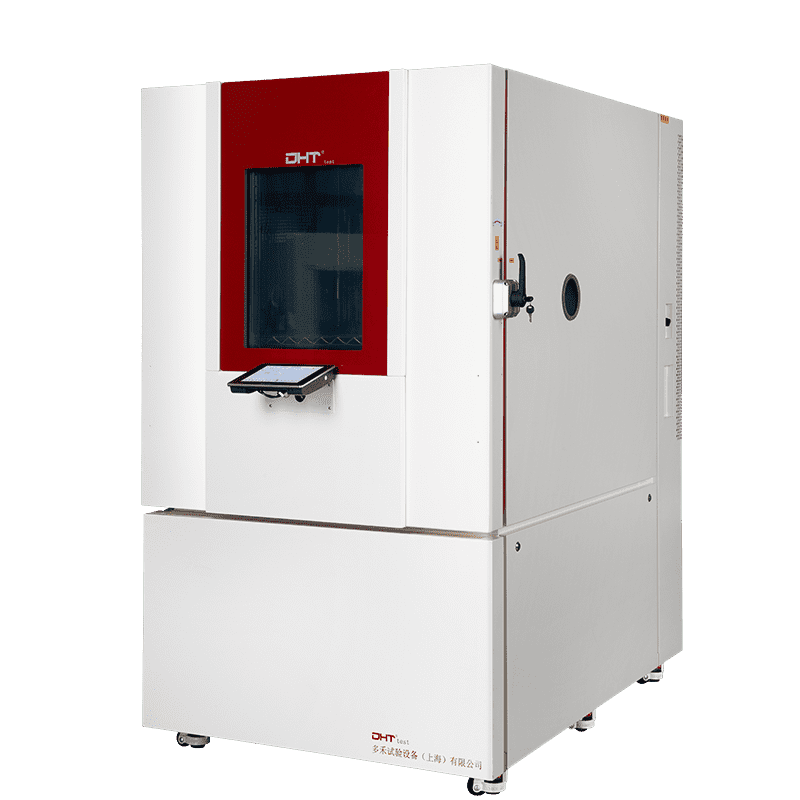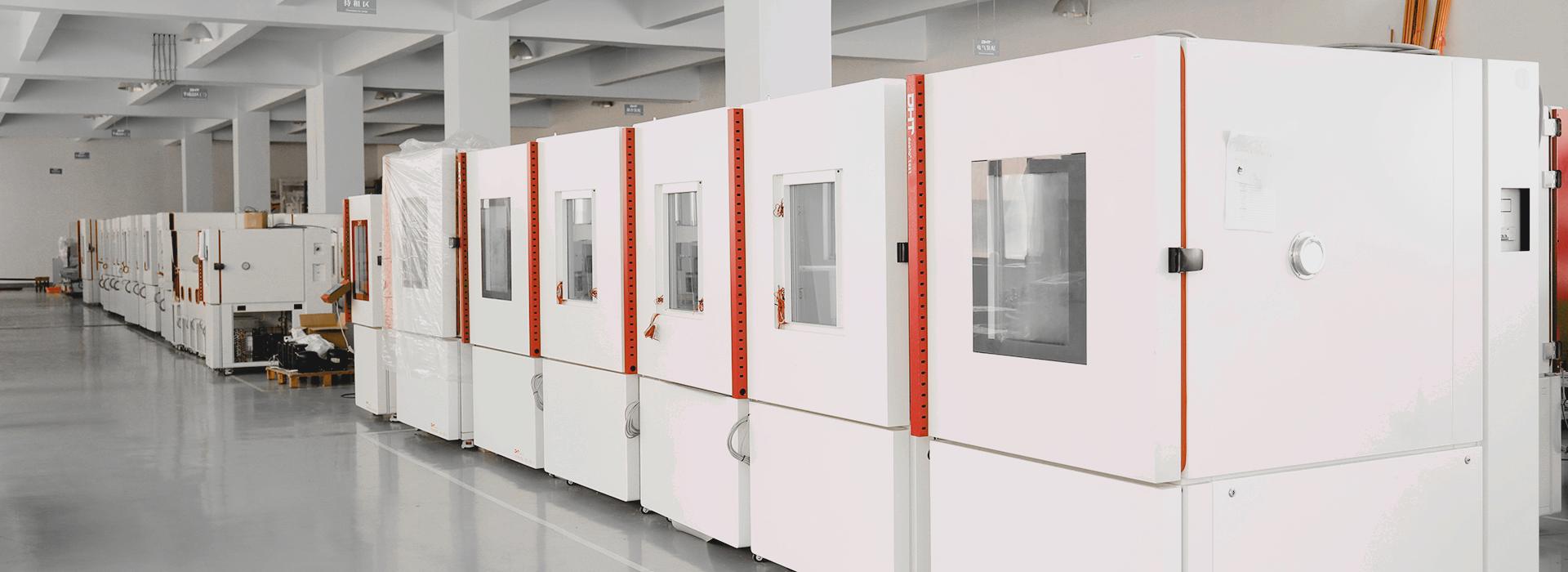Why Are Environmental Chambers So Critical Across Industries?
An environmental chamber is a specialized type of testing equipment designed to simulate natural environmental conditions. Unlike traditional testing devices, the greatest value of an environmental chamber lies in its ability to reproduce and accelerate the impact of real-world environments on products, dramatically shortening R&D cycles and quality verification time.
For example:
- Electronics industry: Chips and circuit boards must undergo thermal shock and damp-heat cycling tests to ensure stable performance across global climates.
- Automotive industry: Parts and complete vehicles are subjected to high-temperature exposure, low-temperature starts, and thermal cycling to validate reliability under extreme conditions.
- New energy batteries: The charging, discharging, and safety performance of lithium-ion batteries rely heavily on stable temperatures, with environmental chambers providing the precise control needed.
Clearly, selecting the right environmental chamber is not a “nice-to-have,” but a fundamental part of a robust product quality control system.
Types of Environmental Chambers and Their Applications
Constant Temperature and Humidity Chamber
- Core Function: Delivers highly accurate temperature and humidity control, maintaining set points (e.g., 25°C±1°C, 50%RH±5%) for days or weeks to simulate stable storage or operating environments. Advanced sensors and a Balanced Temperature and Humidity Control (BTHC) system ensure uniform and consistent conditions.
- Typical Applications:
- Pharmaceuticals: Accelerated stability testing (e.g., ICH Q1A) to evaluate efficacy and shelf life.
- Electronics: Testing PCB boards and ICs under high temperature and humidity for insulation performance and metal migration.
- Food packaging: Evaluating barrier properties, seal strength, and preservation performance of packaging materials.
- Value Delivered: Goes far beyond “observing product changes.” It enables accurate lifespan prediction, prevents mass quality issues caused by environmental variation, and ensures compliance with stringent standards (GMP, ISO 17025).
Thermal Shock Chamber
- Core Function: Focuses on extreme temperature transition rates, shifting between +150°C and -65°C within seconds to apply severe thermal stress. Samples are transferred quickly using basket or air-to-air mechanisms.
- Typical Applications:
- Semiconductors: Testing chip packaging and solder joints for cracks caused by mismatched thermal expansion coefficients.
- Automotive electronics: Simulating sudden shifts from extreme cold parking conditions to hot engine operation.
- Aerospace: Validating components’ ability to withstand rapid temperature fluctuations during high-speed flight.
- Value Delivered: Acts as an efficient stress-screening tool, exposing hidden defects and material weaknesses in a short timeframe. This improves outgoing reliability and reduces in-field failure rates.
Walk-in Environmental Test Chamber
- Core Function: Provides a large-scale controlled environment for full assemblies, large components, or batch testing. Key features include powerful cooling/heating systems, advanced air duct design for uniformity, and customizable interiors (shelving, power supply, monitoring interfaces).
- Typical Applications:
- Automotive testing: Simulating diverse global climates to evaluate engine cold starts, battery pack performance, interior material aging, and HVAC efficiency.
- Energy storage systems (ESS): Testing large battery packs or containerized systems for performance, safety, and lifespan.
- Telecommunications: Verifying cabinet operation and heat dissipation under extreme conditions.
- Value Delivered: Enables full-scale, real-world simulation, reducing sample error and ensuring results reflect actual use cases. This significantly lowers the cost and cycle time of large-scale testing.
Customized Special Test Chamber
- Core Function: Tailored solutions built to meet unique testing needs. Common features include rapid thermal change (e.g., 10°C/min), ultra-low humidity (<5%RH), solar radiation, salt spray, vibration (combined test systems), or low pressure (altitude simulation).
- Typical Applications:
- Biotechnology: Custom chambers with CO₂ and O₂ control for cell and tissue research.
- Defense and military: Combining temperature, humidity, altitude, and vibration to simulate extreme combat environments.
- New material R&D: Creating inert-gas atmospheres for specialized material performance testing.
- Value Delivered: Solves challenges standard chambers cannot address, meeting highly specific requirements (MIL-STD, DO-160) and enabling unique testing capabilities that drive innovation.
How to Choose the Right Equipment for Your Industry
Selecting an environmental chamber is not a generic procurement process—it is a technical decision that must align closely with industry testing standards, product failure modes, and compliance requirements. The guiding principle: ensure test conditions precisely replicate real-world application environments and strict standards.
Follow Core Testing Standards
- Military/Aerospace: MIL-STD-810, DO-160 standards demand integrated temperature, humidity, vibration, and altitude simulation.
- Automotive electronics: Governed by IATF 16949 and OEM-specific standards, with strict requirements on thermal shock rates and temperature extremes.
- Consumer electronics: Guided by JEDEC (e.g., JESD22-A104) and IEC standards, focusing on temperature cycling and Highly Accelerated Life Testing (HALT).
Focus on Key Performance Parameters
- Products destined for Northern Europe require low temperature limits (e.g., -70°C) and rapid cooling rates (e.g., 5°C/min).
- PCB testing requires high thermal change rates (15°C/min or more) for effective stress screening.
- Battery testing demands wide temperature ranges plus redundant safety designs for explosion protection.
Evaluate Integration and Scalability
Modern R&D environments demand interconnected testing. Consider whether chambers need integration with battery cyclers, data acquisition software, or production lines. Chambers supporting Profinet, EtherCAT, and open API protocols offer future-ready automation and lab management flexibility.
The optimal choice balances performance, compliance, and total cost of ownership. When consulting suppliers, provide specific standard references instead of only chamber dimensions to ensure truly compliant solutions.
Conclusion
Whether you are in electronics, automotive, new energy, pharmaceuticals, or food, selecting the right environmental chamber directly impacts testing accuracy and product reliability. At the same time, high-quality testing equipment is not merely a machine—it is the cornerstone of R&D innovation and global competitiveness.
If you are seeking the ideal chamber for your industry, evaluate based on standards compliance, key performance parameters, and integration needs. Making the right decision will not only enhance laboratory efficiency but also strengthen your market position in a highly competitive global landscape.


